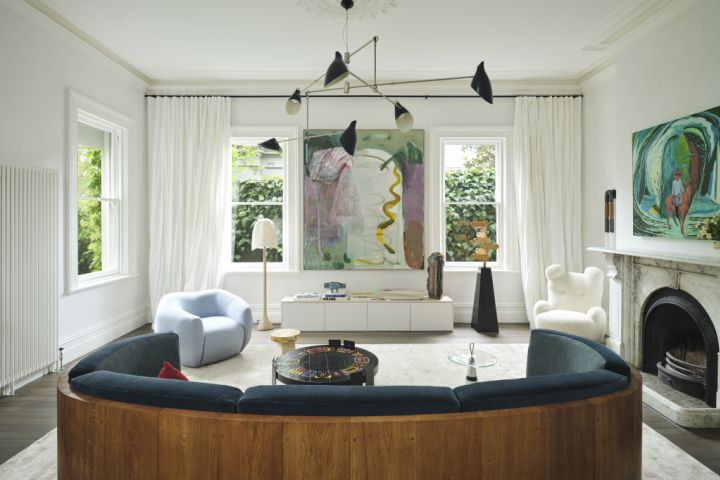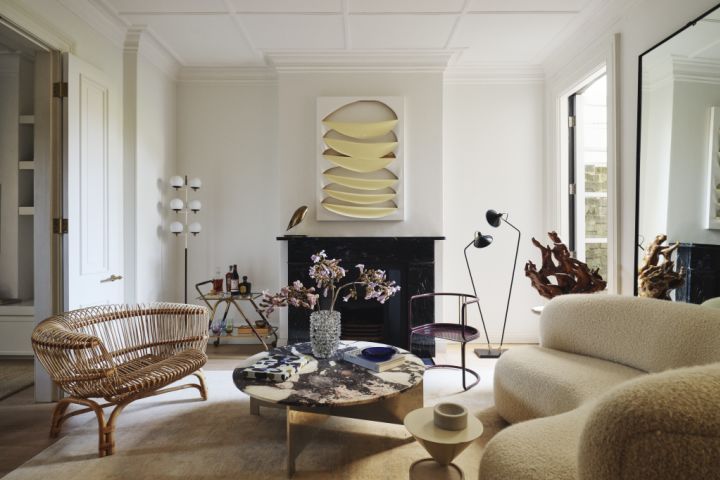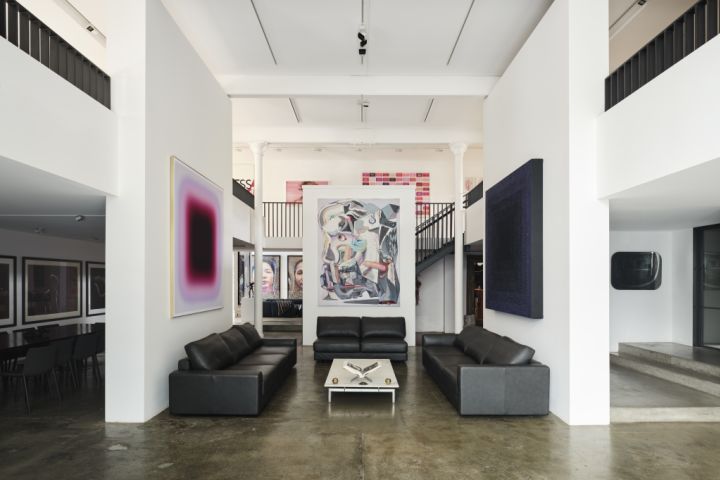
We speak with art advisor and author of Collecting: Living With Art Kym Elphinstone, and gallerist Andy Dinan of Melbourne’s Mars Gallery about how to buy pieces that work in your home, plus how to display them in a way that feels personal to you.
What are the first things to think about when buying art for your home?
Kym Elphinstone: Buy what you love. Go to galleries, go to art fairs, go to graduate art shows at art schools. Really try and see as much art as you can. And when something piques your interest, or you find you’re intrigued by an artwork, speak to the gallerist or the artist and find out a little bit more about it.
Andy Dinan: Do it slowly. It’s a long road and you’ve got plenty of time, so don’t rush it. You’ve got to educate yourself on what you want from your art and that doesn’t happen fast.

What should you think about in the build integration?
Dinan: Bring a gallerist or advisor into the process early, ideally before the house is built. I’ve walked through houses that are fully constructed with nowhere to hang anything. Plan for niches, wall space and sightlines. Even a recess in a stairwell can completely change the way you experience a piece.
What about lighting?
Dinan: Lighting is everything. I always say there should be three types of lighting in every room: daylight, mood lighting and spotlighting. Your artwork has to look good in natural light, but also in the evening, so that’s where mood lighting comes in. And then you want a spotlight that highlights the piece directly.
How should you think about wall space? Is open-plan living making it harder to collect and showcase art?
Elphinstone:Not necessarily. I think open-plan living encourages us to think about different kinds of artwork. Not all art needs to be hung on a wall, and there are so many ways to incorporate art into your house, like a sculptural work on a plinth or a stand.

What role does room choice play when buying a piece?
Elphinstone: It’s an important consideration. If you have a high traffic, narrow corridor, the work that you hang on that wall may benefit from being behind glass or being an acrylic on canvas – something that’s a little bit more hardy. And if you have something that’s soft and textural, you might want to hang it in an area where it’s not going to get damaged by daily life.